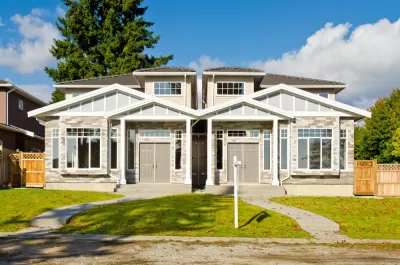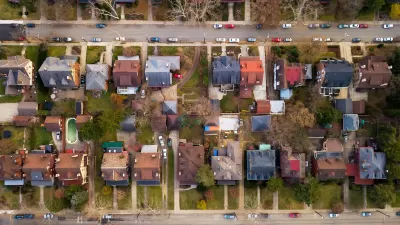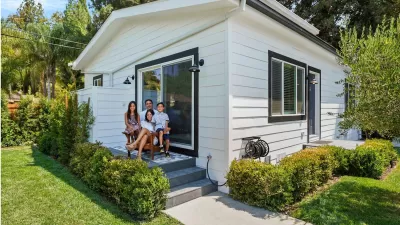Born out of a fear of absentee owners and rapacious investors, owner-occupancy requirements can have the contradictory effects of excluding renters from neighborhoods and limiting the number of rental units available.

A post on Brookings’ The Avenue by Anika Singh Lemar argues that owner-occupancy requirements, particularly on accessory dwelling units (ADUs), stifle housing supply and keep renters out of higher-end neighborhoods. As Lemar explains, “Restrictions on rentals appear in zoning codes, homeowners’ association rules, rules issued by subsidized lenders, and local ordinances.”
“Because renters typically have lower incomes than homeowners and are racially more diverse, owner-occupancy requirements affect the economic and demographic makeup of neighborhoods. Owner-occupancy requirements also prevent property owners from developing repeat expertise in acquiring and renovating existing housing stock to add ADUs; as a result, lenders are less likely to finance ADUs.” Lemar writes that owner-occupancy rules also reduce the housing supply by taking potential rental units off the market.
The article describes several court cases relevant to the debate over owner occupancy. “In the few cases where courts have interrogated the nexus between homeownership and home maintenance, they have refused to enforce owner-occupancy requirements.” Yet many continue to uphold owner-occupancy requirements thanks to vague notions that owners will be better stewards of the property.
Lemar calls owner-occupancy requirements an example of “zoning creep,” the use of zoning to regulate “well outside the scope of land use and zoning regulations,” which has unintended negative impacts on equity and affordability.
FULL STORY: How owner-occupancy regulations are contributing to the housing crisis

Planetizen Federal Action Tracker
A weekly monitor of how Trump’s orders and actions are impacting planners and planning in America.

Maui's Vacation Rental Debate Turns Ugly
Verbal attacks, misinformation campaigns and fistfights plague a high-stakes debate to convert thousands of vacation rentals into long-term housing.

San Francisco Suspends Traffic Calming Amidst Record Deaths
Citing “a challenging fiscal landscape,” the city will cease the program on the heels of 42 traffic deaths, including 24 pedestrians.

Amtrak Rolls Out New Orleans to Alabama “Mardi Gras” Train
The new service will operate morning and evening departures between Mobile and New Orleans.

The Subversive Car-Free Guide to Trump's Great American Road Trip
Car-free ways to access Chicagoland’s best tourist attractions.

San Antonio and Austin are Fusing Into one Massive Megaregion
The region spanning the two central Texas cities is growing fast, posing challenges for local infrastructure and water supplies.
Urban Design for Planners 1: Software Tools
This six-course series explores essential urban design concepts using open source software and equips planners with the tools they need to participate fully in the urban design process.
Planning for Universal Design
Learn the tools for implementing Universal Design in planning regulations.
Heyer Gruel & Associates PA
JM Goldson LLC
Custer County Colorado
City of Camden Redevelopment Agency
City of Astoria
Transportation Research & Education Center (TREC) at Portland State University
Jefferson Parish Government
Camden Redevelopment Agency
City of Claremont





























